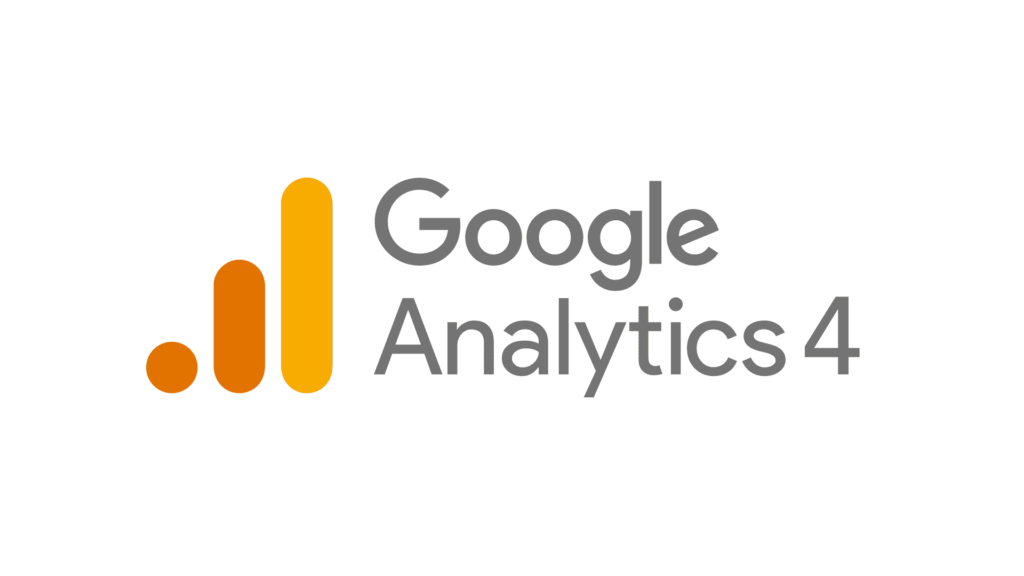GA4 has been here for a while now, but still, it needs “hacking” to get the best results.
Many users need GA4 Help, you are not alone! In 2023, Google killed GA as we knew it, leaving many organisations without a reliable data source for digital platforms.

An overarching rule of all the GA4 considerations, expect to have to configure what you want. Although powerful in the back end, the interface is very stripped back in terms of “out of the box” features compared to what marketers have been used to. I have found that the simplest things you could find straight away in GA3 take much longer to set up and analyse in GA4.
As marketers, we have lost the efficiency and immediacy of request fulfilment, but we have gained bigger picture flexibility if we use GA4 in the correct way.
How to use Google Analytics 4 optimally

GA4 works better tracking users, not sessions: The primary measurement metric for traffic volume in google analytics 3 was a “session”. In crude terms, a session is a group of interactions that a user takes within a given time frame. This is agnostic to the actual number of users who are interacting with the website or app. For example, 1 individual can have 5 sessions on a website before converting, by looking at each of these sessions and not the user, it is missing the bigger picture of the acquisition story.
SCENARIO – Imagine in a real shop:

- Fred, Claire and John walk into a shoe shop, all on individual visits.
- Fred sees something he wants but doesn’t buy it because he wants to see if it is cheaper elsewhere. Fred then returns 1 hour later to buy the item. At the till, Fred gives the cashier his email address to send his receipt to him.
- Claire doesn’t purchase anything but instead uses her email address to register for 10% off when she comes back or online. She then buys an item online using her discount code.
- John walks into the shop and looks around and buys something there and then, again, giving his email address to send his receipt to.
In GA3 we would measure Fred as two people and one conversion, Claire as 1 person but no conversions (for our shoe shop), and John as 1 person and 1 conversion. GA3 assumes everyone behaves like John. We know that is very non-representative of actual behaviour. So, in total, 4 people and two conversions, and we would not recognize them on subsequent visits, simply treating them as new sessions if they returned to us after 7 days.
How GA4 processes the data
Google Analytics 4 (GA4) addresses these limitations by focusing on data aggregation through events and user lenses, which is closer to an individual level of understanding.
GA4 would capture the above scenario as 3 people and 3 conversions (if we tied in offline and online conversions). This is enabled because we can map a variety of conversions (including email registrations) we can get a true view of campaign effectiveness based on metrics closer representing actual individuals, instead of arbitrary “sessions”.
We would also recognize all three individuals when they returned to us, as they all gave us an email address, so we can more effectively measure their lifetime value across multiple visits to our business by tracking a unique user ID (uuid) or hashed email value.
With the above example in mind, here are 5 things to consider when using GA4
GA4 Help #1: Adopt a User-first approach
Try not to look at sessions as a primary metric. In every business I work with, I always have a “user first” approach to analytics. Sessions are tracked differently in GA4 to GA3.
In GA3, a session is defined by a group of hits that share a “ClientID”. The client ID is a random number stored within the GA cookie. If the same client ID stops recording hits within 30 minutes (or if the clock strikes midnight) the session is considered over.
How many times have you returned to a website and resumed your journey after a period of 30 minutes? I would imagine for most this is fairly common. This is why the session-based measurement model is outdated and somewhat arbitrary, especially in cases like our shoe shop.
GA4 counts sessions by counting the number of “session_start” events and associates a session ID. These events are triggered when a user opens the web or app in the foreground, or views a page when there is no current active session. If the source / medium changes mid-session, it will not generate a new session, and if the clock strikes midnight, the session will continue.
Users are more effectively tracked in GA4 through reporting identity, and if you capture unique IDs, can get closer to reality than we ever could do before. Read more about sessions.
GA4 Help #2: Use a supplementary data tool.
Get a supporting data tool, such as Hotjar, Contentsquare, Microsoft clarity or a different platform to run alongside, such as PWIKPro, Matomo, snowplow or PostHog. GA4, is geared more heavily towards google ads integration over being a product analytics tool, it is in an identity crisis, therefore it is half a product analysis tool, and half a marketing attribution tool.
There are plenty of alternatives. I recommend to have another analytics tool in place as well as GA4
For example, the much-loved funnel analysis report in universal analytics has not been replaced adequately, we also cannot easily see the impact of certain events on overall conversion rates without advanced setup.
Because GA4 is trying to be this “Jack of all trades”, there has never been a better time to integrate an additional analytics tool into your data stack. GA has always been good enough at product analytics to serve the needs of most businesses, however I believe now many will flock to the heatmapping tools and more sophisticated data processing technology to get additional insights into the data and customer journeys on websites.
GA4 or “quantitative” tools tell us what is happening, the “session replay” tools inform us of potential reasons why. Both are useful in their own context for optimisation purposes. I would recommend always having both to get the “why” behind the “what”.

GA4 Help #3: Utilise conversions in Google Ads, but back them up with a manual conversion tag.
Use Google Analytics conversions as your Google Ads conversion goals. In Theory, Google Analytics is an ideal tool to feed website conversions into for PPC campaigns through google ads. Despite this, you can and should still use a manual conversion pixel placed on the order confirmation page of your website, and if you are using Meta ads, you may well be used to that approach already.
Why? In my experience a linked Google Ads account still has a discrepancy between GA4, the real values, and the reported value in Google Ads. Because, google seems to operate as many different disjointed businesses, I always recommend going with the manual approach to make sure your data is correct.
GA4 Help #4: Include multiple data streams – Including Measurement Protocol
Use the full capability and track across domains, devices and platforms. Originally, GA4 was called “App + web”, because GA4 is essentially following the firebase data model, which is Google’s app measurement solution. Remember, enrich the dataset as much as possible, join different data streams and use only 1 property. If your business has an app, get your app data in GA4. If you collect unique user ID across all the platforms and domains, analytics will use this to stitch this together to form a view of a user that is closer to the individual level.
Enrich the dataset as much as possible, join different data streams and use only 1 property
Measurement protocol is the mechanism where you can send offline conversions to GA4 via an API. As long as the data is formatted correctly, GA4 will stitch the attribution back to the channel source so you can validate your conversion against “real life”. This can be very useful if you want to strip out potential lead that have not converted fully, allowing more accurate measurement of return on advertising spend.
Also, if we tie a user identifier from our offline and online purchases, like in our shoe shop example, we can start to understand the journey in all touchpoints, which is very powerful insight possible using Google BigQuery.
Final Tip: Use Google BigQuery
Get data out of the interface and store it in Google Big Query. The data in the GA4 interface has a maximum lifespan of 14 months, which does allow for year-on-year analysis, but anything longer term will require storage outside of GA4. Use GA4 as a contributing source for your “true” dataset, never let GA4 become the source of truth in your business.
The key opportunity here is to join offline data. if your business has a customer data platform with collected unique user IDs, we can now stitch offline and online activity together using SQL techniques.
Use GA4 as a contributing source for your “true” dataset, never let GA4 become the source of truth in your business.
This is not suitable for all data types, for example data driven attribution and data modelling is only available within the GA4 interface. Plus there may be differences in the values presented, again sessions being a good example. But if you want to eventually compare multi-year trends, SQL or big query is currently the only option.
CONCLUSION
Do not panic if your numbers don’t work straight away. We are using a completely different analytics tool than what marketers have been used to. Counting methodologies are different, sessions being a prime example of that. If for example, GA4 gives you a conversion rate 1% higher than GA3, adjust your expectations and use the new benchmarked figure as a comparison.
There are plenty of alternatives. I recommend to have another analytics tool in place as well as GA4, and using the advanced techniques detailed on the Apex Digital blog. If you need some help with your GA4 setup, or Digital Analytics generally, get in touch.
Want to implement or optimise your GA4 setup but don’t know where to start? Contact me today for a free consultation.

Or get in touch below
Or connect with me on LinkedIn
Read More
-
10 things to analyse that will improve website performance
What are the most effective data points to track that tell you how well your website is functioning? The purpose of most websites is either to drive ecommerce sales, drive leads or drive engagement with content. Some of these are applicable to all of these, while some are quite specific. The key metric we should…
-
Privacy Sandbox: What is happening to 3rd party cookies?
You may have seen some noise online about the phasing out of third-party cookies and the introduction of Google’s Privacy Sandbox. This post is to explain what this means in varying aspects of digital marketing. There’s lots of emotive & negative language to describe this change. Some may call it a “cookie-pocalypse”, be very wary…
-
Alternatives to GA4 (Part 1): Where is Digital Analytics Heading?
What other Digital Analytics tools are available? There are many Digital Analytics Tools that are alternatives to Google Analytics 4 (GA4) on the market today. These existed before GA4, but have come to the forefront because of the consensus that standard GA4 can be limited for many basic use cases. In this article I’m going…